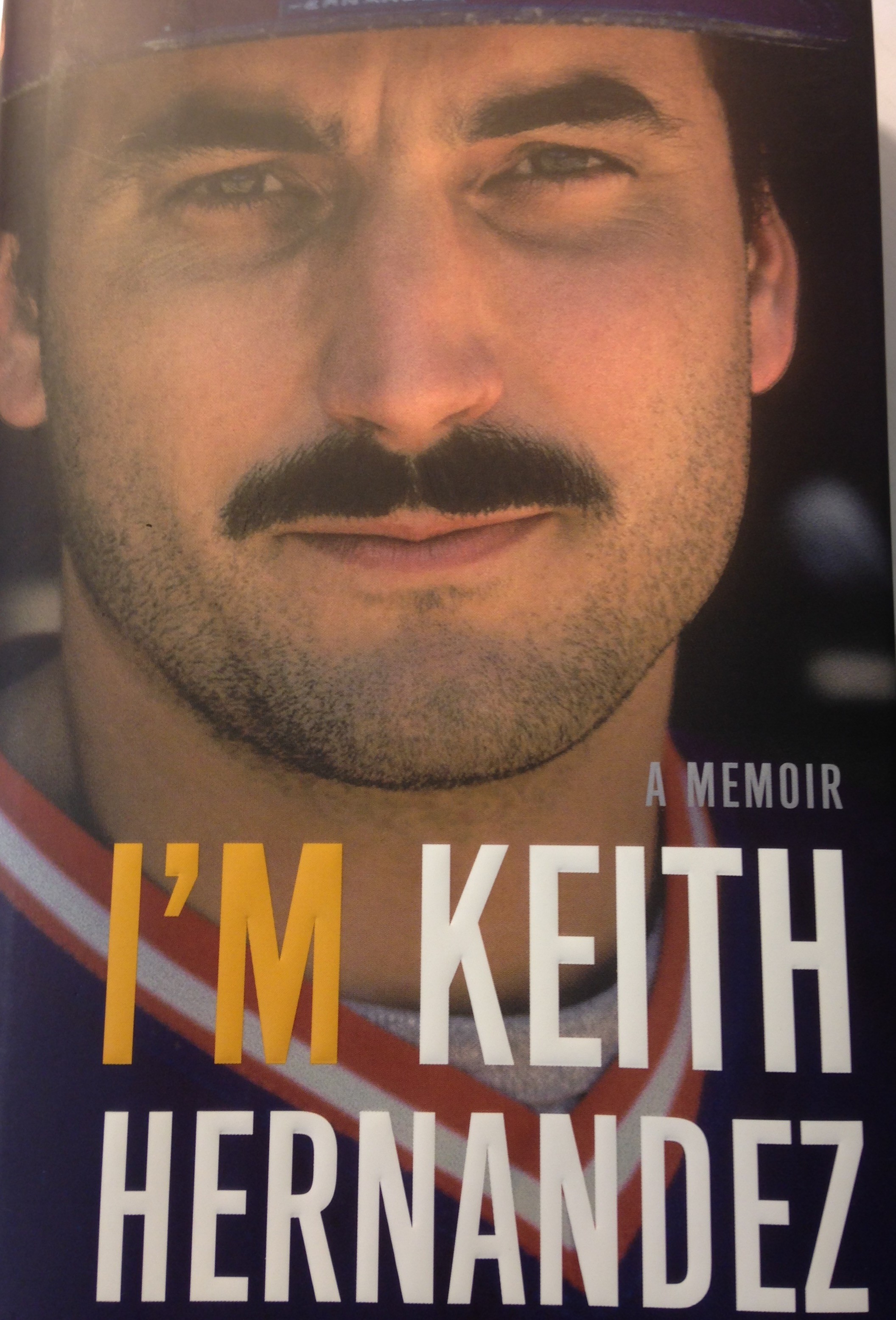“The wall isn’t smooth. Its façade is brick, with mortar inset between the brick. So if I throw the ball against the wall, it might hit a corner of the brick or an indentation within the brick itself and not come straight back. It is unpredictable, just like a live batter.”

Keith Hernandez played a version of wall ball as a boy in the early Sixties. If there’s no one else around with a glove or bat, young baseball players improvise with a rubber ball and a solid wall (preferably brick for the reasons Hernandez describes above). I played wall ball, too. There was a significant difference, though, between my version and the one described by Hernandez. When I played in my grandmother’s backyard in the early Eighties, you see, I pretended to be Keith Hernandez.
****
Baseball books are my comfort food. If a novel or presidential biography (I love both) serves as escape, a book about baseball — for me — is a further departure from the drills and details of the day. But I’m Keith Hernandez (released earlier this month by Little, Brown and Company) was something new. Something as close to personal as I’ll likely ever read on a published page under another author’s name. The book is a terrific biography, worth reading for any baseball fan regardless of team (or player) of choice. But it was something deeper for me.
I learned to love baseball at my dad’s side. He grew up in Memphis, the son of a man who fell in love with the St. Louis Cardinals when Dizzy Dean was baffling hitters (and the English language) and Ducky Medwick was dodging bottles in decisive World Series games. Dad shared stories of his own heroes: Harry Brecheen, Red Schoendienst, and especially the great Stan Musial. He emphasized the remarkable talents of Bob Gibson and Lou Brock, though I was too young to fully understand, let alone follow, their exploits.
But there was Keith Hernandez. And Ted Simmons. And Garry Templeton. These were my Cardinals, my heroes, a trio of late-Seventies stars whose numbers in the box score each morning sent my day in one direction (three hits for Tempy!) or another (hitless night for Simba). Hernandez emerged from relative anonymity to superstar in 1979, becoming the first infielder to win a Gold Glove and batting title in the same season on his way to National League MVP honors. I was 10 years old and wanted to become Hernandez someday.
As we learn in I’m Keith Hernandez, the Cardinal (and later New York Met) star had his own childhood heroes, some of them San Francisco Giants (he grew up in the Bay Area) but others St. Louis Cardinals. Hernandez’s dad, John, had been a teammate (briefly) of Musial’s during the latter’s 1945 service in the Navy. When Hernandez wasn’t playing “wall ball” as a child, he was learning the game on teams coached by his father, watching film (when it was actual film) of his batting stroke for areas to improve.
It’s the need — and burning desire — to improve that shapes Hernandez’s memoir, and it’s the component that will engage any reader who once had difficulty hitting an inside fastball or felt anxiety over securing a position on the diamond. We learn that it wasn’t until after Hernandez received that MVP trophy that he truly felt he belonged in the major leagues, that he’d come as close as he could to mastering the hardest skill in sports. You won’t find recollections of the 1982 World Series championship Hernandez won with St. Louis (or the 1986 title he captured as a Met). If ever a memoir has focused on the proverbial journey to stardom, it’s the one with Hernandez staring at us from under a Mets helmet on the cover. (Hey, you gotta sell books in the Big Apple.)
Between tales of his rise as a player, Hernandez includes views of today’s game that might not be familiar to fans who don’t hear his color commentary as a Mets television analyst. He’s decidedly old-school, even as he acknowledges the impact of analytics and computer-generated scouting reports in building a modern baseball team. “It’s a lot of information to sift through in a very sterile, static learning environment,” writes Hernandez. “And despite all the headphones and video games in today’s youth culture, we are all still social creatures.”
Hernandez’s wall-ball skills took him further than mine took me. (Among baseball’s fabled five tools, I had two, and outfielders who can run and catch don’t play beyond high school.) But boys tend to join the ride of their baseball heroes, and I felt very much a part of Hernandez’s glory days as a Cardinal. Revisiting those days in the pages of his illuminating and heartfelt memoir was a joy along the lines of a cleanly struck baseball into the right-centerfield gap.